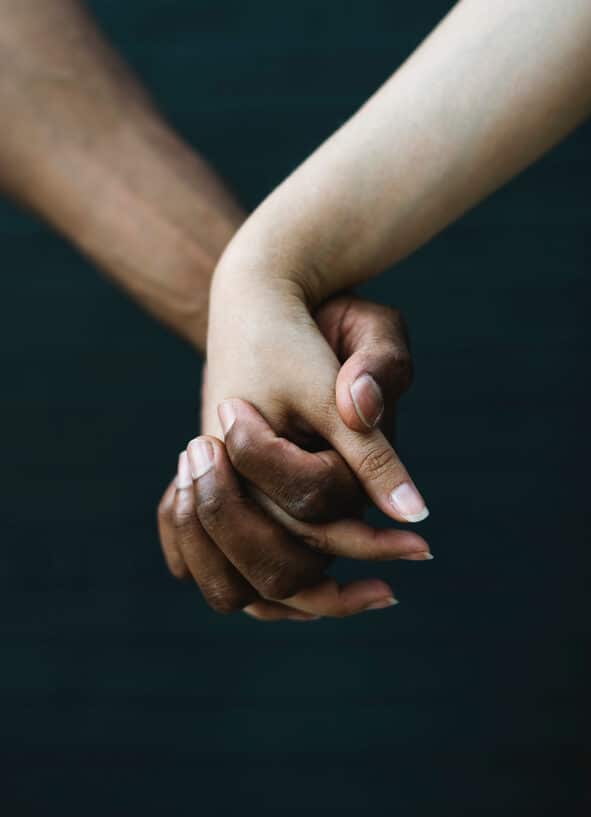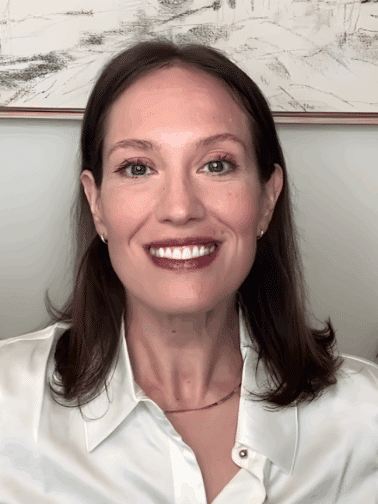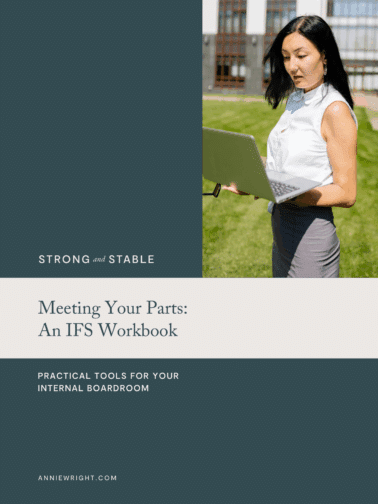My four-year-old daughter came home from preschool last week and told me that she and her bestie had argued about who was wearing the “most princessy dress” that day.
I asked her how that made her feel, empathized with her feelings, and then asked if she and her friend had been able to repair after the fight.
“Well, sort of, Mom,” she said, “But she didn’t even know how to KRAW!”
[If you’re confused, stay with me, I’ll explain what KRAW is at the end of the essay in the PS.]
“Oh honey,” I said, “That’s because that’s just a hand gesture our family uses to repair relationships. It’s something mommy and daddy made up a long time ago when we needed something that would help us be friends again after we argue. Your friend doesn’t know KRAW because that’s just something our family does. But she probably knows other ways to apologize and be friends again after arguments.”
My daughter looked skeptical.
“Well, we DID apologize and play together again, so now she’s my best friend again. But for real life, other people don’t know how to KRAW?”
“Not exactly like your family does.” I said, “That’s just something mommy, daddy, and you do. But other kiddos know how to repair after they have fights with people they love because their families teach them how to talk to their friends about big feelings, apologize, and feel like friends again.”
“Okay. Can I have a cake pop for dinner now?”
I smiled.
But also denied her request for dessert before dinner.
The entire exchange reminded me that something I now take for granted in my little family – the way we repair our relationships after rupture – is something that wasn’t a skill I knew how or could safely practice with others earlier in my life.
Learning to Repair Relationships: What My Childhood Didn’t Teach Me
Growing up in a dysfunctional family system and enduring relational trauma, I learned many maladaptive beliefs about what arguments and conflicts with others mean, such as:
- Conflict equals danger.
- Arguments mean you will be disowned in the court system, defriended on Facebook, be estranged, given the cold shoulder, and have doors closed in your face.
- To get past an argument, just ignore it and then pretend it never happened.
- The way to get over conflict is to just give in.
- If you really love someone, there will never be arguments.
- There’s no point in telling someone how they hurt you because they won’t take responsibility for their part.
- It’s not safe to confront others about how they made you feel.
- Conflict means love will be withdrawn.
- And more.
The only healthy modeling about conflict I tangentially experienced was from my high school best friend’s family.
They were a close, connected, healthy family system that practiced non-violent communication. They were way ahead of their time for the 90s in Maine.
While I never saw them fight or argue, my friend would tell me about how her family would argue but then work through their arguments with each other, using non-violent communication.
This was so foreign to me.
But it was also a potent seed that was planted about what could be possible in healthy family systems.
What's Running Your Life?
The invisible patterns you can’t outwork…
Your LinkedIn profile tells one story. Your 3 AM thoughts tell another. If vacation makes you anxious, if praise feels hollow, if you’re planning your next move before finishing the current one—you’re not alone. And you’re *not* broken.
This quiz reveals the invisible patterns from childhood that keep you running. Why enough is never enough. Why success doesn’t equal satisfaction. Why rest feels like risk.
Five minutes to understand what’s really underneath that exhausting, constant drive.
Flash forward many years later into my own relational trauma recovery work, and this – the belief I held about arguments and conflict in relationships and the lack of toolbox I had to work through those arguments after they happened – was a big gap in my proverbial psychological foundation.
Over time in therapy and in time through closely connected relationships, I identified my maladaptive beliefs about what conflict and arguments in relationships meant and replaced them with more adaptive, helpful beliefs, primarily this one:
In relationship, rupture is inevitable; it’s the repair that counts.
What do I mean by this?
I mean that in any relationship between two or more people who are showing up authentically with their actual needs, wants, and preferences known and expressed, ruptures (aka disagreements, arguments, misunderstandings, misattunements, and attendant hurt feelings) are going to be inevitable.
And that is OKAY.
In fact, it’s totally normal, and it’s to be expected if two people are bringing their whole selves into the relationship.
So conflict in relationship is inevitable.
And after conflict comes the opportunity for repair.
Meaning acknowledging how the rupture made you and the other person feel, getting to the root of what caused the conflict, empathizing with each others’ experience, and attempting to connect again to establish relational safety.
And that – the repair after rupture – is what ultimately counts and signals a healthy relationship.
Not the absence of conflict. But rather the presence of rupture to establish safety and closeness again.
For some, reading the words I just wrote may evoke a “Yeah, duh, Annie.” reaction.
This concept – in relationship rupture is inevitable, it’s the repair that counts – may be so obvious and second nature that they may even wonder why I’m writing about it.
But for others among us, such as those of us who come from relational trauma histories where we were raised by mood- or personality-disordered parents, this is not an obvious belief nor likely a dominantly lived experience.
In fact, to some, this may even sound like a fairy tale (I know it would have for me at one point).
This is a belief and a skill set many of us have to learn intellectually and then viscerally practice in safe, attuned, responsible relationships before we can finally, deeply grasp the concept that, in relationship rupture is inevitable; it’s the repair that counts.
I feel lucky that I’ve been able to practice this belief and skill set with my husband for the last twelve and a half years as well as with a circle of friends and my own long-time therapist.
Experiencing rupture and repair with these people again and again over a long arc of time combined with my own EMDR therapy has been deeply reparative, meaning it’s helped me rewire my maladaptive beliefs and repattern my nervous system to feel less afraid when conflict happens.
Because of this, I’ve also been able to show up differently for my daughter.
And, alongside my husband, consciously teach her and model for her the inevitability of conflict. But also the way we practice repair after rupture, (hopefully) helping her to internalize a robust skill set for navigating relationships in the world.
(Now granted, last week showed us that the hand gesture our family uses to signal a desire to repair and reconnect isn’t exactly helpful when she tries to do it with other kiddos and they give her blank stares and ask her what the heck she’s doing, so we have room to improve that skill set, no doubt…)
For many of us on relational trauma recovery journeys, re-learning (or learning for the very first time) that rupture in relationship is inevitable, and it’s the repair that counts is an example of the psychological re-foundationing work that’s usually required as we attempt to grow and heal from the impacts of our past.
And often, those of us on relational trauma recovery journeys will read what I write and say this to me. “Yes, Annie. I KNOW I need to practice this and experience safety in having conflict in relationships. But there is literally not one single person in my life who it’s safe to do this with.”
And to that, I say: “Begin by practicing it in your relationship with your therapist. Practice having conflict there first.”
And often, I’m met with another rebuttal: “But that doesn’t count. I pay my therapist. That’s not a real relationship!”
And I offer a reframe: “Yes, you pay your therapist. And that relationship between you both is REAL. It becomes the laboratory for you to practice all these skills in. You then get to take those practiced skills out into the real world after you train with your therapist. So that relationship absolutely counts. And it’s a perfect place to practice if you don’t have anyone in your “outside life” you feel like it’s safe to practice this with. Let therapy be your laboratory.”
And remember: while those of us who come from relational trauma recovery pasts often have more psychological re-foundationing work to do and catch up on than our non-traumatized peers, but healing is utterly possible with the right support.
Here’s to healing relational trauma and creating thriving lives on solid foundations.
Warmly,
Annie
P.S.: What the heck is KRAW?
Like me, my husband comes from a relational trauma background. So early on in our relationship, we were two young adults trying to learn a lot of the skills we missed out on early in life.
It was messy and hard and inspired a lot of content for this blog.
We still don’t do things “perfectly”. But within the safe container of our marriage, we try to do better every year that passes.
And one of the tools we co-created, probably in year three or so of our relationship, was a hand gesture to signal our readiness and willingness to repair after conflicts to support us in better practicing this skill.
We called it KRAW because it combined the initials of our name. And we paired it with a hand shaped into one half of a heart.
The other person shapes their hand into one half of a heart. And then we put them together in the shape of a full heart. And we say “KRAW” together at the same time. (Then talk about what happened in more detail.)
And, when one of us is super hurt and not willing to repair and/or we need to repair quickly for whatever reason, we evoke the phrase “MASTER KRAW”. (We’ve only had to do this about six times in the last 12 years. But man do we take it seriously.)
So back to the top of the essay. Our daughter has grown up seeing us do this and participating in this with us.
She literally thought it was what all families do until the other week in preschool. So now we’re teaching her some other skills she can do with kiddos who don’t have this kind of “forgiveness secret hand gesture” in their families.
I wanted to share this with you for a few reasons:
- So you could understand what I meant by the word KRAW.
- So you could see that even a licensed therapist and someone who is an “expert” in relational trauma still needs to work on foundational psychological tools and that she has conflict with her husband (because that’s inevitable).
- And so you could be inspired to create something similar inside your own family/partnership that’s a little signal to support you all in practicing the skill of repairing after rupture.
If you feel so inclined, I’d love to hear from you in the comments:
What came up for you reading today’s essay? What did you learn about conflict growing up in your family system? How has that changed for you on your healing journey and what and who has helped you the most to have reparative experiences around conflict and rupture? Do you have a secret hand gesture inside your partnership/family, too?
If you feel so inclined, please leave a message. This little corner of the internet gets about 25-30,000 blog readers each month. And we all learn and benefit from each others’ shares and wisdom.
Something you say may kindle hope and inspire another so thank you in advance for sharing if that feels good to you.





